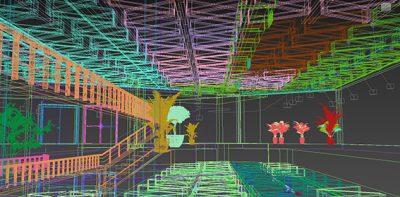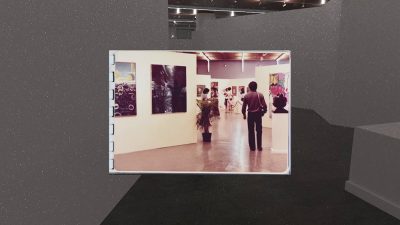Archives projects >
They were There (2019-20)
Through researching the Asia Art Archive’s Ha Bik Chuen Archives, I revisit one of my own installations from 12 years ago (in 2008), and explore the relationship between public archives, artist records, plants, architecture, space and power relations in Hong Kong’s exhibition history.
Ha’s exhibition records systematically document various arts and cultural events from the 1960s to the 2000s; even today, the organisers of exhibitions do not archive those exhibitions as methodically as Ha did. Secondly, I am intrigued by the local art ecology and the way of life of artists in the last century, such as the way Ha took recorded and then had the photographs developed and printed for circulation among fellow artists as part of a gift economy. I found that ‘potted plants’ appeared and disappeared in the exhibition space as if they were being manipulated in order to introduce outdoor nature into a man-made indoor space, and the artists and curators seemed to be consciously using them for different purposes such as planning the itinerary to view the works, dividing the space, changing the texture of the space, and matching the visual elements of the artworks.
I began to question the function of the plant as a mere background and decorative piece, intuitively sensing an uncertainty in its conscious and unconscious existence. In the 1990s, the plants in the photographs gradually disappeared, and Ha’s photographic records fully reflected the transitional exhibition practice in that particular period.
Method
The research focuses on the “exhibition records” in the Ha Bik Chuen Archives, and then extends to the materials in the Hong Kong Government Public Records, the Architectural Services Department and related public art institutions. In this study, I take four public art institutions as case studies: the Hong Kong Arts Centre, the Hong Kong Museum of Art, the Hong Kong City Hall and the University of Hong Kong- University Museum and Art Gallery. The above institutions appear more in Ha’s records, and the public nature of these institutions allowed for more research materials to be generated in the process of exhibition production, which allows me to better sort out the relationship between plants and exhibition history.
I requested materials from each of these institutions in early 2020, followed by taking panoramic photographs and filming in the space, which was then transformed into a 3D virtual reality, and finally interviews with the people in charge of the organisations. The representatives were almost unanimous in their opinion that the plants in the exhibition were of unknown origin and that the decision-making process was not fully documented.
3D animation: SHEN Jun
Research assistant: Man Nga Lok, Esther
Special thanks:
Asia Art Archive
Hong Kong Arts Centre
Hong Kong Museum of Art
Hong Kong City Hall
University Museum and Art Gallery, The University of Hong Kong
Hong Kong Government Records Service
Hong Kong Architectural Service Department

